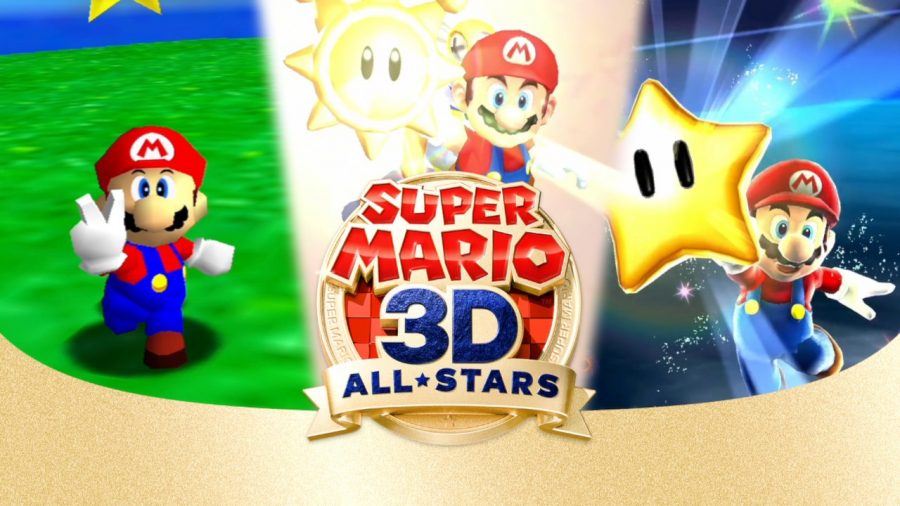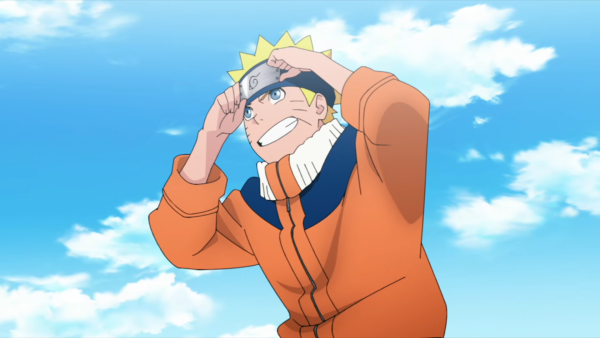Super Mario 3D All-Stars: An overpriced collection of excellent classics
Nintendo celebrates 35 years of Mario with a flawed, incomplete compilation
Super Mario 3D All-Stars, released by Nintendo on Sept. 18, 2020, is three good games in a single package. As the 35th-anniversary celebration of Mario, this game has both wins and losses. (Screenshot courtesy of Nintendo)
By: Alexander Musa
[email protected]
Let’s get this part out of the way: Super Mario 3D All-Stars is three good games in a single package. If you own a Nintendo Switch, and you need to spend $60 on software right now, you aren’t making an objectively poor choice to bet on the 35th-anniversary celebration of Mario. There are some caveats, however, which turn what ought to be a slam-dunk purchase into something less.
It’s fair to say that the character of Mario has massively influenced video games. Whether in two dimensions with his entries on the original Nintendo Entertainment System or in 3D starting with 1996’s Super Mario 64, his name is synonymous with high-quality entertainment featuring creative visuals and intuitive gameplay. Modern video games might look very different without the influence of this particular plumber.
It’s this level of influence, the pedigree of the whole Mario franchise, really, that makes this collection somewhat frustrating to review despite the inherent quality of all three games it comes with. The problems with Super Mario 3D All-Stars have little to do with the mechanical faults of the three games themselves, though they all do show their age and the limitations of the platforms they originated from. But there are some disappointing technical issues, some that are legitimate faults with performance or presentation, while others are personal nitpicks.
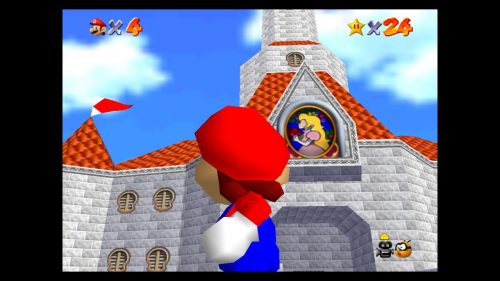
Of the three games included in this collection, Super Mario 64 sees some of the biggest upgrades over the other titles in the collection. Though it retains the blocky, polygonal appearance from 1996 on the Nintendo 64, the user interface art has been completely redone, looking sharper than ever. The game’s simple appearance lends itself well to being displayed on the Switch’s 720p display and even looks nice enough on a 4k display.
Unfortunately, Nintendo decided to retain the original game’s 4:3 aspect ratio, making Super Mario 64 the only game in the collection to not fill a widescreen display. It also runs at a solid 30 frames-per-second, whereas the original game ran at both a lower resolution and far more inconsistent framerate.
In addition to Nintendo’s questionable aspect ratio and framerate choices for the game, there are some sound quality issues that weren’t present in the original release. Certain sound effects are muffled, and even the music doesn’t come through as clearly as one would expect in a re-release like this. This doesn’t affect the gameplay whatsoever, but it becomes surprisingly noticeable from repetitive sounds, such as Mario’s footsteps across the various surfaces you’ll be sprinting over.
While the dedication to preserving the original experience is appreciated, it’s disappointing that Nintendo didn’t increase the resolution or framerate. Fan-made unofficial releases of this classic have pushed the game to a proper widescreen resolution and double the frame rate. The result is that 3D All-Stars feels inconsistent as a package, especially when we consider the 2002 sequel to Super Mario 64 also included in the collection.
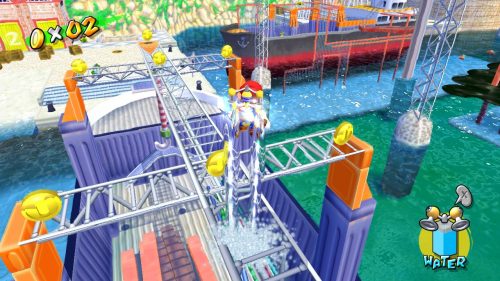
Super Mario Sunshine also runs at a stable 30 frames-per-second, technically better than when it was released, though there are still occasional drops in performance. Unlike Super Mario 64, it does not preserve the original 4:3 aspect ratio of its original release but offers 1080p widescreen resolution that looks especially gorgeous when playing on a modern flatscreen TV. Even when limited by the Switch’s 720p display, Sunshine looks impressively sharp, bright, and colorful, showing off the original game’s summer-y art design the way we all probably believed it looked almost two decades ago. Thanks to the increased resolution and the sharpened UI art, Sunshine as a whole looks far better than ever.
There are some graphical artifacts that are likely the result of certain things not being meant to be seen at a higher resolution, differences in hardware, or inconsistencies with the emulation. Again, unofficial fan modifications of Super Mario Sunshine have led to higher frame-rates and higher resolutions before, so I can’t help but wish Nintendo had put in the additional effort for a paid product. I also wonder why they didn’t let players skip the early cutscenes when starting a new game, they still drag on for as long as they did back in 2002, and in 2020 I dreaded starting a new game knowing I would have to sit through the opening exposition again.
It’s little things like this throughout this entire package. It feels like nitpicking, especially in the face of three pretty great games. But the nits are there to pick, and they take away a bit of the shine off something meant to celebrate 35 years of gaming history.
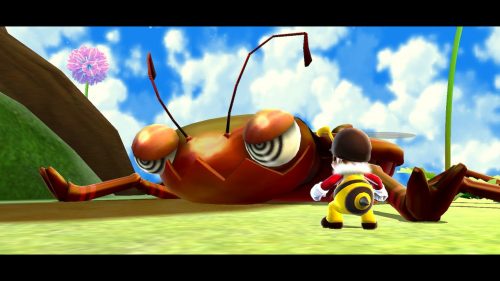
Super Mario Galaxy, the newest game in the collection from 2007, does not have the same resolution and framerate quibbles from the old titles. It runs at 1080p on TV, and better maintains the 60 frames-per-second of its original release. Instead, it suffers its own unique issue in the form of some intense color banding, which hurts the overall presentation for those who are sensitive to these types of graphical anomalies.
Less noticeable to me was the resolution scaling that Nintendo implemented, ensuring the game’s framerate remains stable during Galaxy’s more visually demanding sequences. To give you an idea of how unnoticeable this was to me, I only learned about it by reading an extensive technical review from Eurogamer’s Digital Foundry.
If you can overlook those graphical issues, Galaxy is arguably the cleanest looking and definitely smoothest running game in the collection.
Where this version of the game fumbles the most is in the actual play controls. Originally released on the Nintendo Wii, Super Mario Galaxy offered a unique control scheme through it’s Wii Remote-Nunchuk combo, giving players a traditional analog thumbstick with the controversial motion controls that some critics derided as “waggling.” Motion controls are used to guide a pointer across your screen, allowing you to collect little star bits while you dash and jump through the game’s surreal galactic environments.
The Nintendo Switch can thankfully replicate this incredibly well with its detachable Joy-Cons or an optional Pro Controller, making playing the game on your TV the optimal way to play the game, and probably the way Nintendo always envisioned the experience. The developers even changed one of the more debated aspects of the original’s controls by mapping the spin attack command to one of the many buttons available on the Joy-Cons, whereas in the original you had to wave the Wii Remote rapidly to get Mario to use the attack and fueling years of jokes about “waggle controls.”
But the Switch is also a handheld device, and Nintendo has gone on to emphasize the portability of the console by releasing the Switch Lite. Unlike the base Switch, the Lite cannot connect to your TV via a dock and does not have detachable Joy-Cons. Users with the Lite would obviously have some troubles using motion controls like Galaxy demands, so Nintendo’s concession was to let portable Switch users for either model use the system’s touch screen to replicate the pointer controls. It works, but nowhere near as smoothly as the pointer controls using detached Joy-Cons.
Part of what would alleviate this issue would be fully re-mappable controls, and possibly allowing users to make use of that second analog stick for the pointer, instead of limiting it to being an extremely restricted camera control. But as with every other game in the collection, you cannot change your control settings. To use the touch screen while in handheld mode, players need to take a handoff of one set of controls and swipe across the screen to collect the star bits.
While the questionable play control choices of Galaxy really only affect one game in the collection, it’s yet another crack in what should otherwise be very sturdy armor.
Even with my complaints above, the three games in the collection are some of the best 3D platformers to ever hit the console market, and they still capture what made them instant classics when they originally released. What you’re getting here is a partial history book of sorts, showing the evolution of 3D Mario games from 1996 to 2007, and that is by itself impressive. Few 3D platformers have combined the deftness of control, the refined and at many times surreal art styles, and the unique soundtracks that come with each of these Mario games.
Some gamers would argue that other developers are still chasing after the high watermark set by the plumber in ‘96. While I can’t agree with that level of hyperbole, playing these games again on my Switch was a reminder of just how good they were for their time. It’s interesting to see how Nintendo evolved 3D Mario games from one platform to the next, and playing these older titles again made me really appreciate 2017’s Super Mario Odyssey even more.
But in 2020, Nintendo’s slavish-yet-inconsistent dedication to preserving the original experience of these titles falls somewhat flat in Super Mario 3D All-Stars. It doesn’t help that the collection itself feels somewhat incomplete by omitting Super Mario Galaxy 2, the 2010 sequel to the first Galaxy title. Nintendo has yet to explain their rationale for the decision, so fandom speculation has run rampant with guesswork, conspiracy theories, and the hope that somehow this missing title will be introduced as download content later down the line.
Also working against this collection is the existence of similar offerings from other franchises. For the past decade or so, many companies have brought out their own collections of classic 3D titles, so Nintendo isn’t treading on new ground here with this release. In recent years we’ve seen collections where developers have done more than simply upscaled the existing textures or increased game resolutions. More recently, the Crash Bandicoot N. Sane Trilogy and the Spyro Reignited Trilogy received considerable graphical upgrades over their original releases and arrived at the same $60 price point. It’s easy to compare these two packages with Nintendo’s offering, and feel that maybe there wasn’t enough done to really justify the cost for 3D All-Stars.
Including the full soundtracks for all three games is a nice touch, especially the fantastic Super Mario Galaxy themes. But at the end of the day, you’re paying a premium for three old games in Super Mario 3D All-Stars, a package that probably needed a little more time in the oven to become an easily recommended purchase.
Super Mario 3D All-Stars released for the Nintendo Switch on Sept. 18, 2020, and will be available for a limited time digitally and physically through March 31, 2021.


